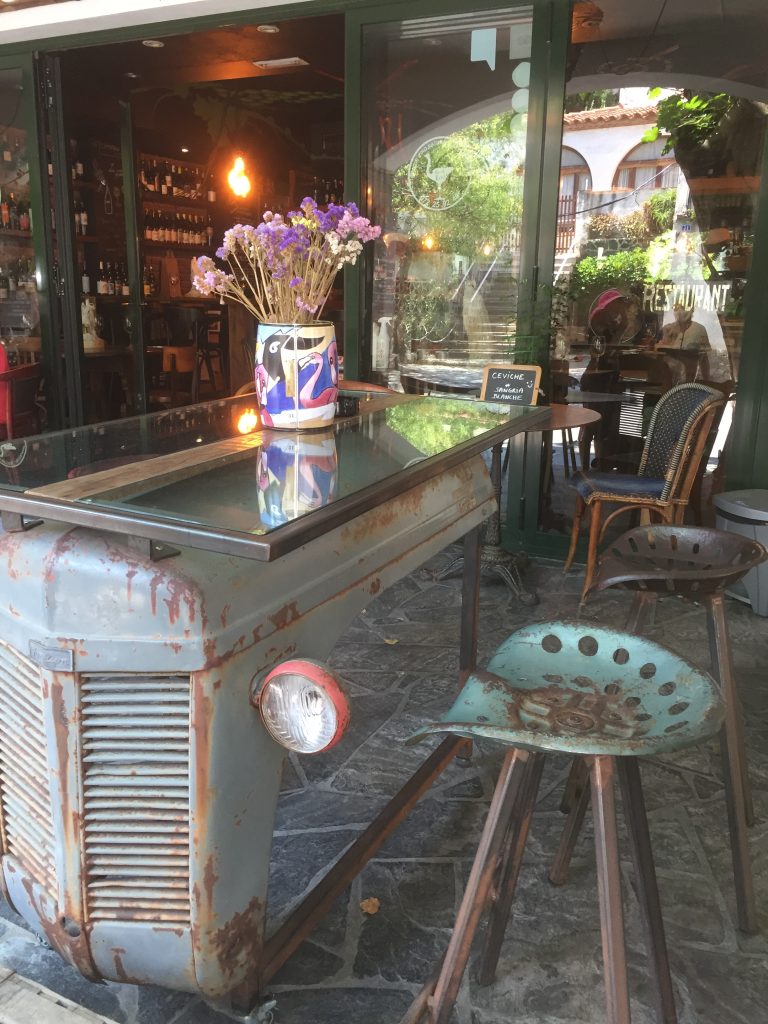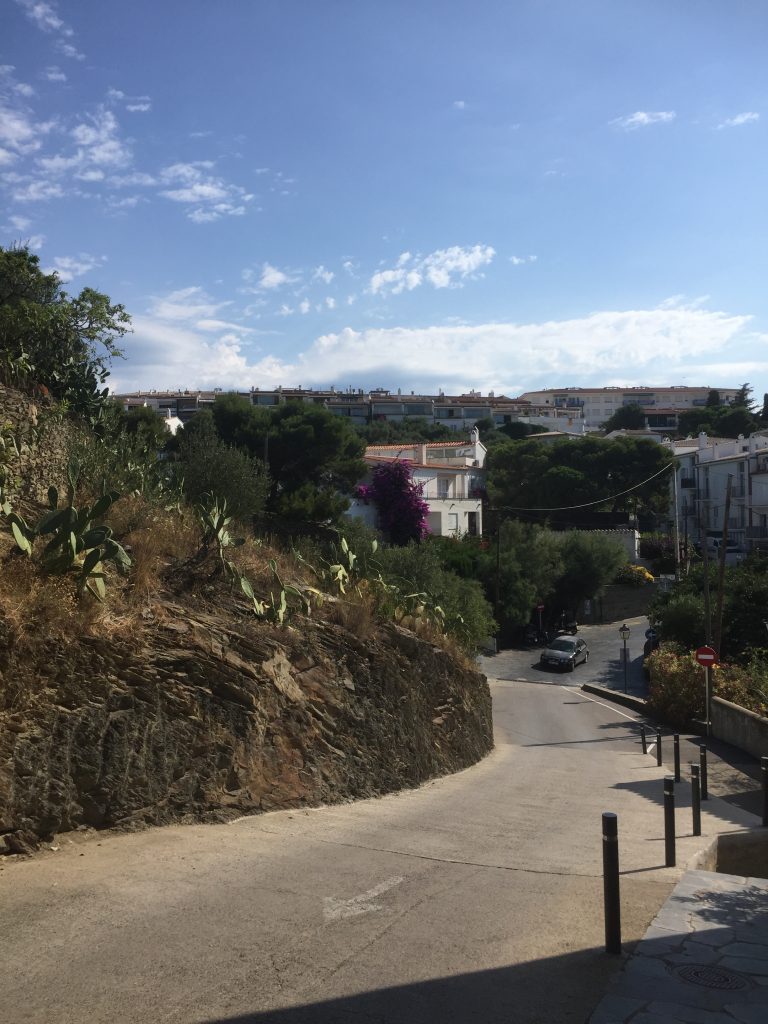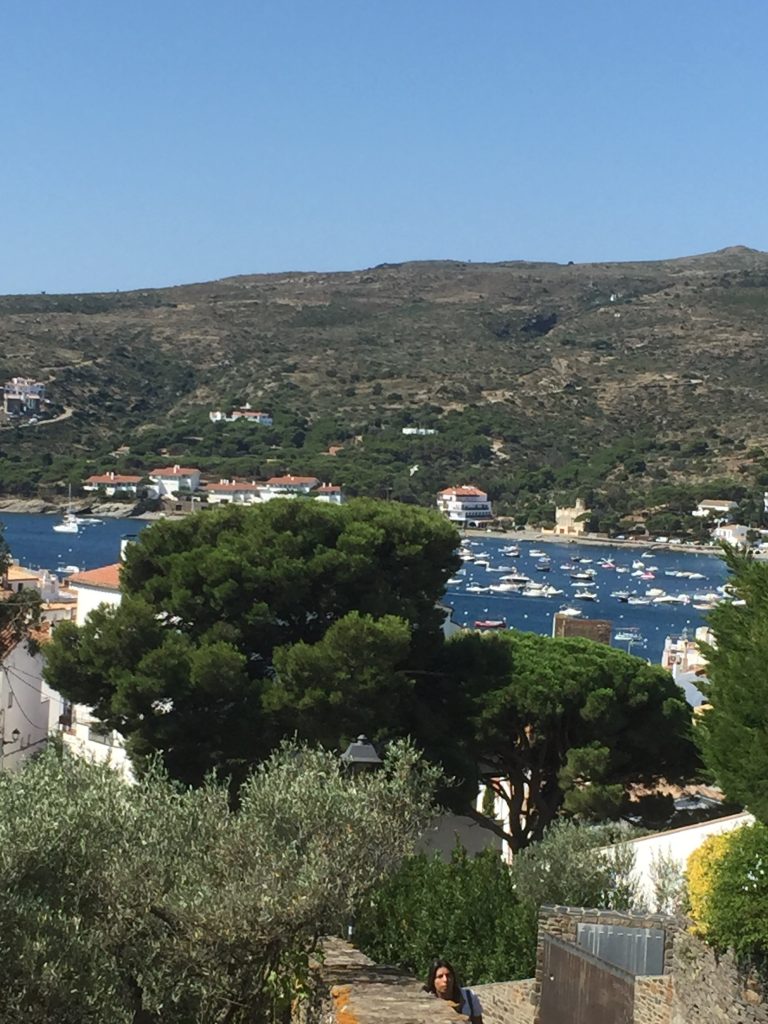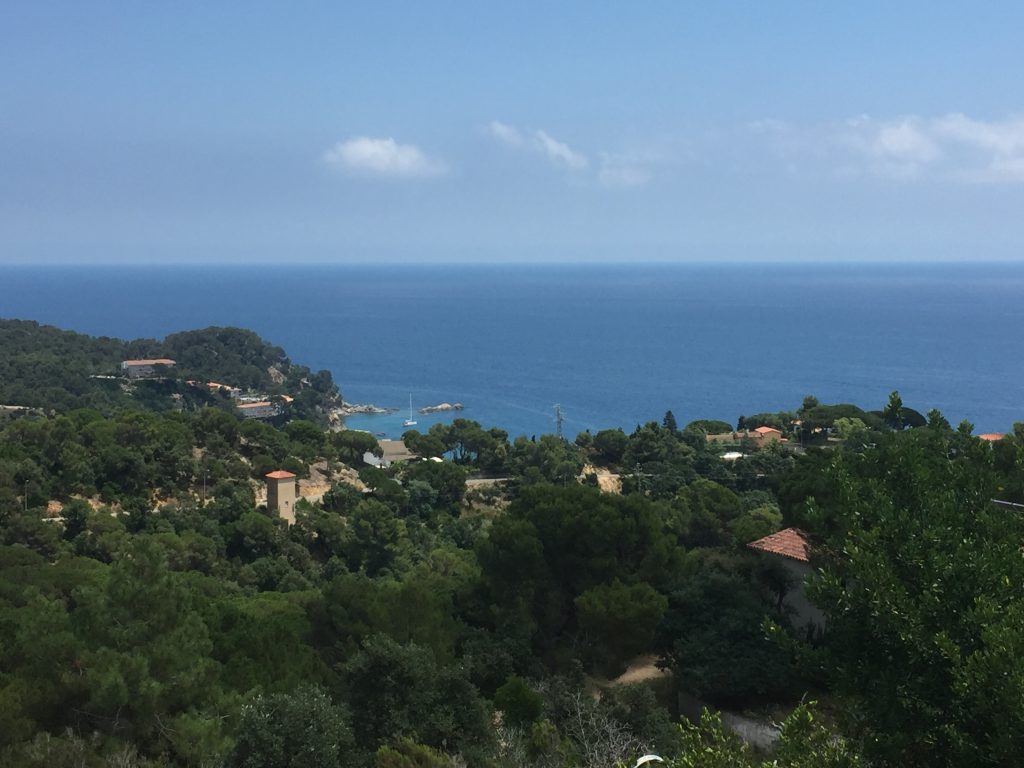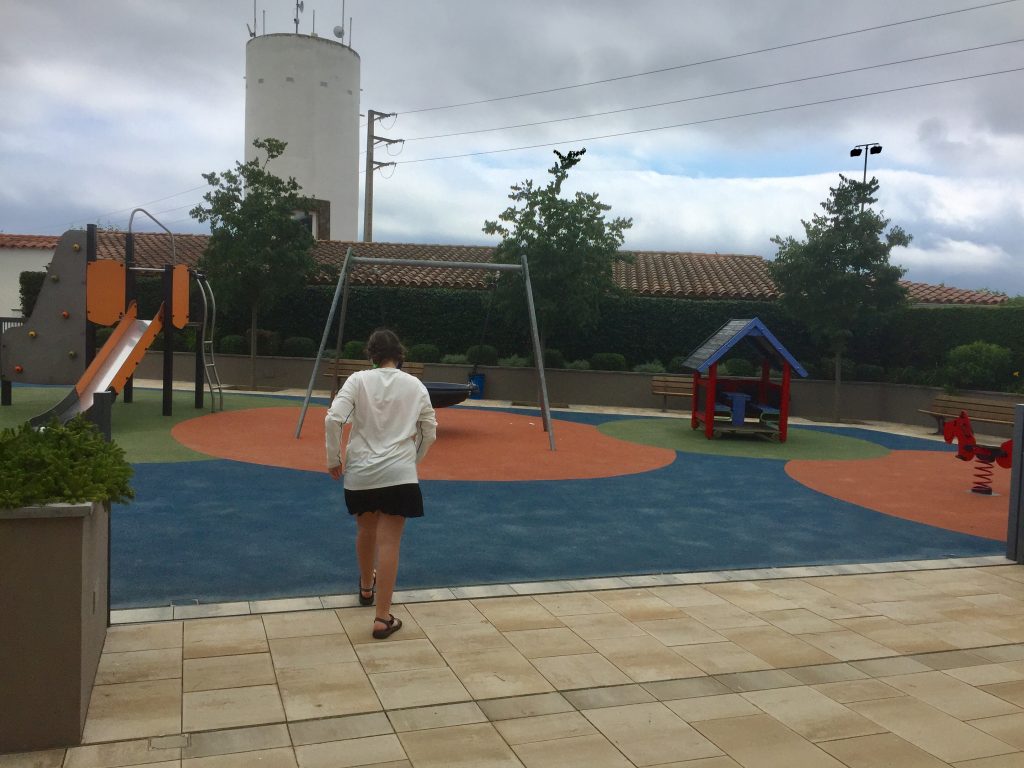
El Fluvià 
Espoñellà 
El Fluvià
The plan for this leg of the journey was to drive through Figures, hopefully find a place to park, and see the Dalí museum. The building is famous architecturally in addition to being the final resting place of much of Dalí’s art and the man himself. I had researched Figures online and determined it would be easy enough to park near the museum and possibly stretch our legs for a bit. However, we soon discovered that Figures is a mass of tiny, one-way streets that twist, turn and, often, unexpectedly dead-end. As I mentioned previously, the GPS is not able to keep up with your car when you are maneuvering through these tiny city streets so our phone maps were next to useless. At one point, my mother, who is frustrated by Google Maps on a good day, threw up her hands in exasperation and cried “Even this stupid phone doesn’t know how to get there!” To make matters worse, there is very little signage in Figures, so we were not able to rely on a blue or brown marker to point the way. Finally, with all of us working diligently to translate and navigate, we somehow arrived at the museum! We recognized the eggs on the roof immediately. The very same roof-top eggs we saw at Dalí’s home in Port Llegat (see Quirky Cadaqués).
Because of the pandemic, the museum was closed when we arrived so we decided to do a slow drive-by instead. All of the photos I have of the museum were taken by Allita who hung out the rear passenger window, snapping shots like mad and shouting directions at me – “Pull over!, Stop a minute!, Go forward just a little!, Wait! Go back!” I felt like I was driving through a photoshoot with Annie Leibovitz in the backseat.
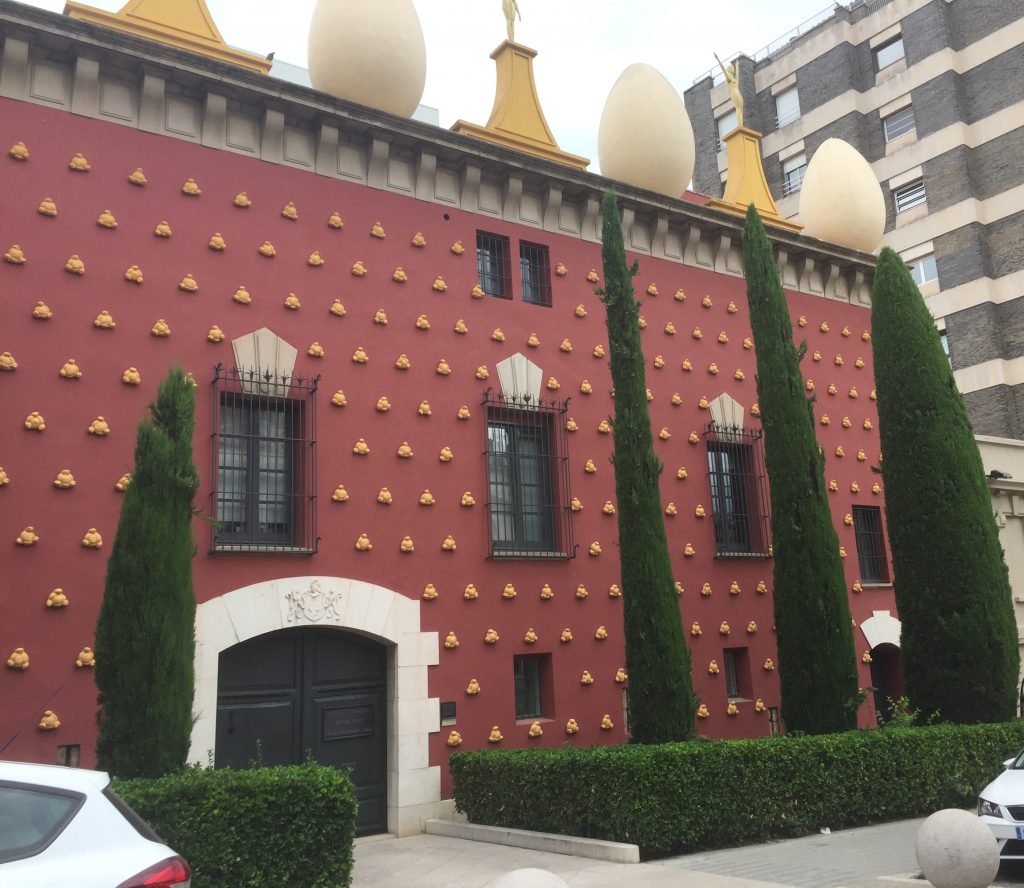
Dalí Museum 
Dalí Museum 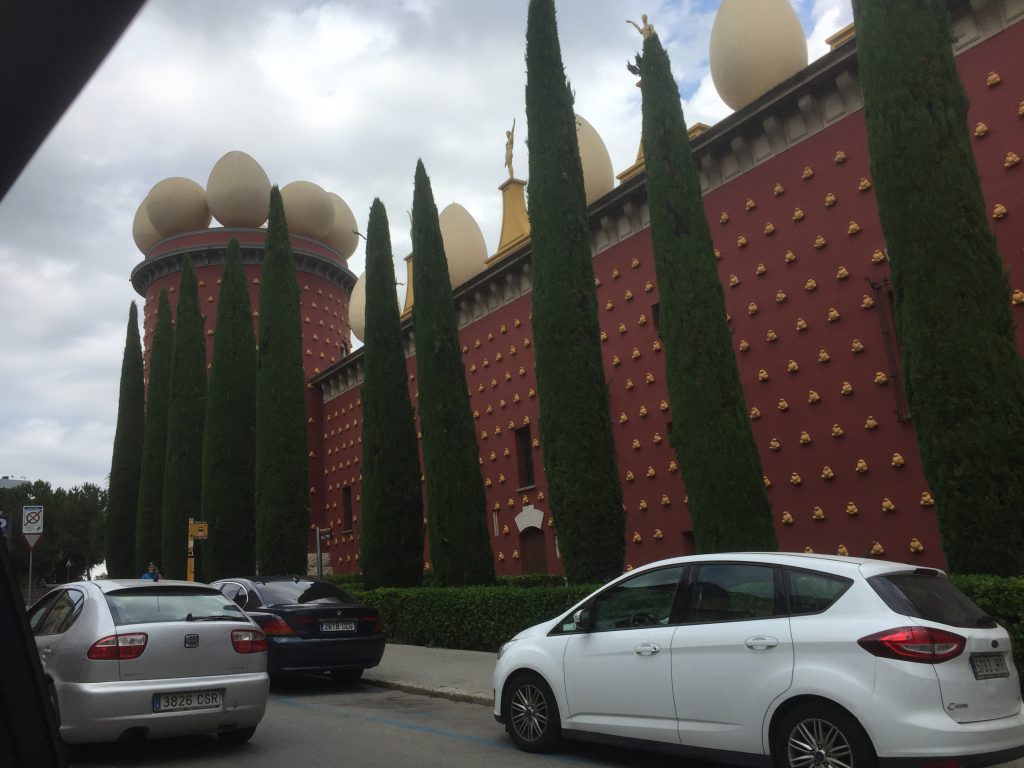
Dalí Museum
By now, we had gotten our fill of navigating downtown Figures, so we took the quickest exit towards Esponellà. Actually, we took the quickest exit and hoped we were headed the right way. It wasn’t for another hour that we decided all was well with our navigation. Ha!
We made our way through the tiny towns of Navata, Pompià and Crespià on a winding country road that took us past fields of farms and ranches, ruins of structures (churches? castles?) from long-ago days, and over a multitude of creeks and streams at the base of the Pyrenees. Finally, we crossed the river, El Fluvià, on a tiny one-lane bridge controlled by traffic light (thankfully) and arrived at Camping Esponellà, our destination for the next two nights.

Mini golf 
Foosball 
More mini golf
Camping Esponellà is another resort-style campground with a variety of fantastic activities including mini-golf, foosball, swimming pools, table tennis, a bar and a restaurant all situated right along the banks of the river. Unfortunately, their proximity to the river also means mosquitos. Many mosquitos. However, they were a good deal less aggressive, persistent and annoying than their cousins in Arizona. The Spanish have polite mosquitoes – why does this discovery not surprise me? Still, we were able to set up our tent and get the car unpacked before the rain started. This was quite a fortuitous accomplishment because when the rain came, it came in with a grand entrance. In fact, it made quite the statement most of the night.
We had planned for rain. Well, ok, not exactly. We saw only sunny skies for our trip when we left Barcelona, but Mom, who is our resident weather expert, reported in Platja d’Aro that there was a chance of rain for the next two days! So, I drove us to a store on the way out of town and we procured a plastic drop cloth to fashion into a rain fly for the tent/canopy. We actually bought two because the puny things were about 2mm thick and we did not expect one to last through a storm. Needless-to-say, we were pleasantly surprised and delighted to discover that our 4m x 5m thin plastic sheet was quite suitable and did a fantastic job of keeping the tent and all occupants dry from any rain that tried to penetrate the roof.
Thus, on our first night in Esponellà, I was able to sleep inside the tent, with all our belongings piled all around me on every possible plastic item we had (inflatable rafts, the shower curtain floor, one inflatable air mattress, etc.) so that all would remain as dry as possible. Mom and Allita slept on a single inflatable twin mattress inside the back of the van. See? Renting a van WAS a good idea after all. And yes, I did preen for a bit the next morning.

So much candy! 
BANANAS! 

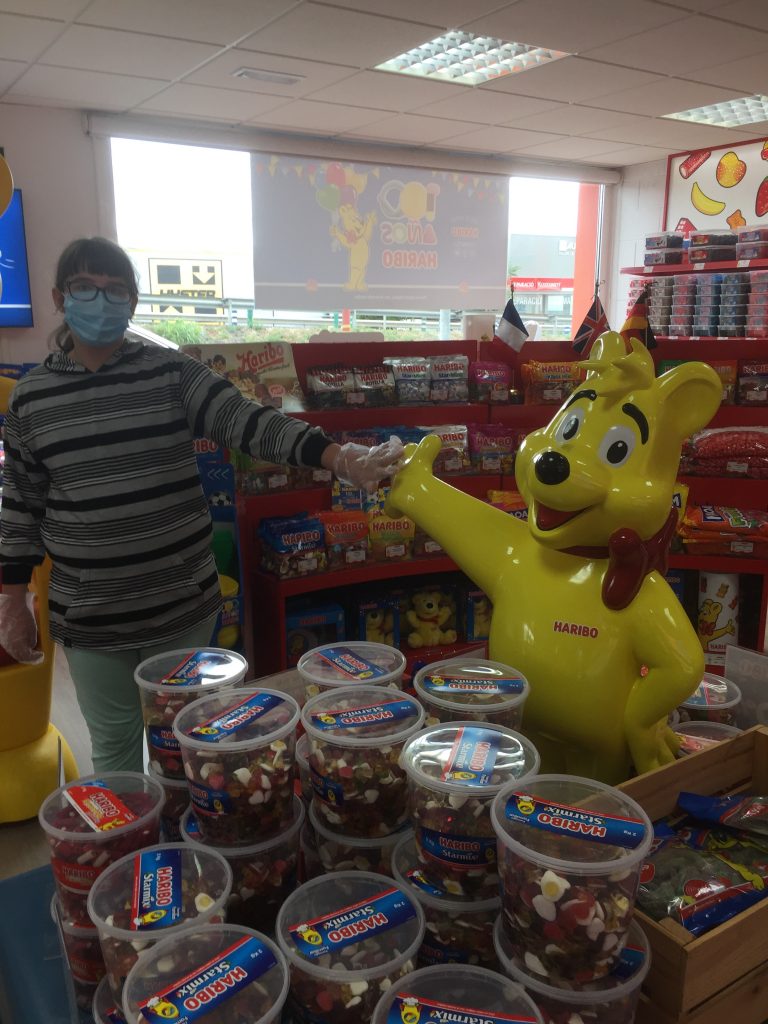
High-five! 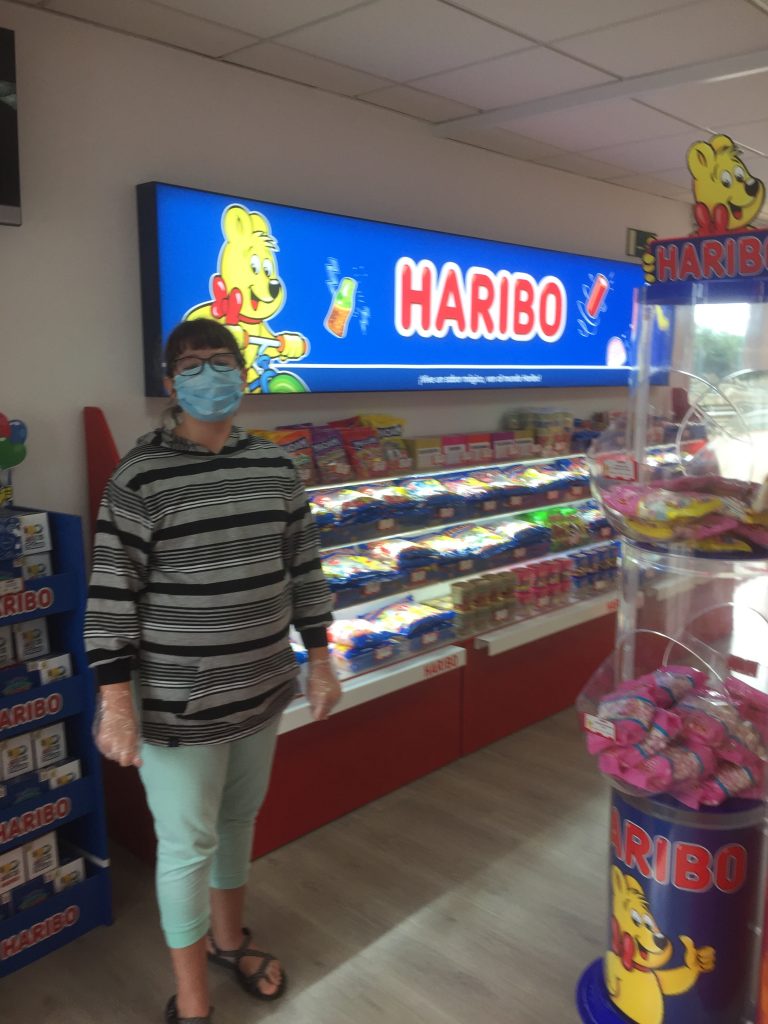
Candy everywhere! 
LOVE the factory store! Oh yes!
The next day, Allita and I decided to make a trip to the Haribo factory in Banyoles. How often does one have a chance to visit the place where Gummi Bears are made? We left Mom at the campground, reading a book in a sliver of sunshine and talking to the mosquitos, and drove down another fabulous, winding country road through downtown Esponellà and Melianta until we reached the autoroute just outside Banyoles. We missed our exit the first time, so we had the opportunity to do a Spanish u-turn, drive through four traffic circles, and then finally arrive. The factory has considerable security restrictions, not all of them due to Covid-19. Sadly, we were unable to take any photographs. We were, however, able to make full use of the company store, where we applied our 20% discount coupon from the campground and made off with giant bags of candy like thieves in the night. It was fabulous! Further, we ate as much of our bounty as we dared in the car on the way back to Esponellà and nearly ended up making ourselves sick in the process.
To ease off the sugar rush, we parked in the tiny medieval town and wandered around, exploring passageways and narrow paths that, on more than one occasion, took us into someone’s backyard! Two resident chickens pointed out the folly of our ways and directed us toward the route back to the van. Finally, we returned to the nearby campground, confessed our sins to GG, and eventually embarked on an afternoon foosball and mini-golf tournament. Before the end of the evening, we swam in the not-heated-very-much-if-actually-at-all pool and enjoyed a lovely meal at the poolside restaurant. All-in-all, it was an excellent venturesome day!
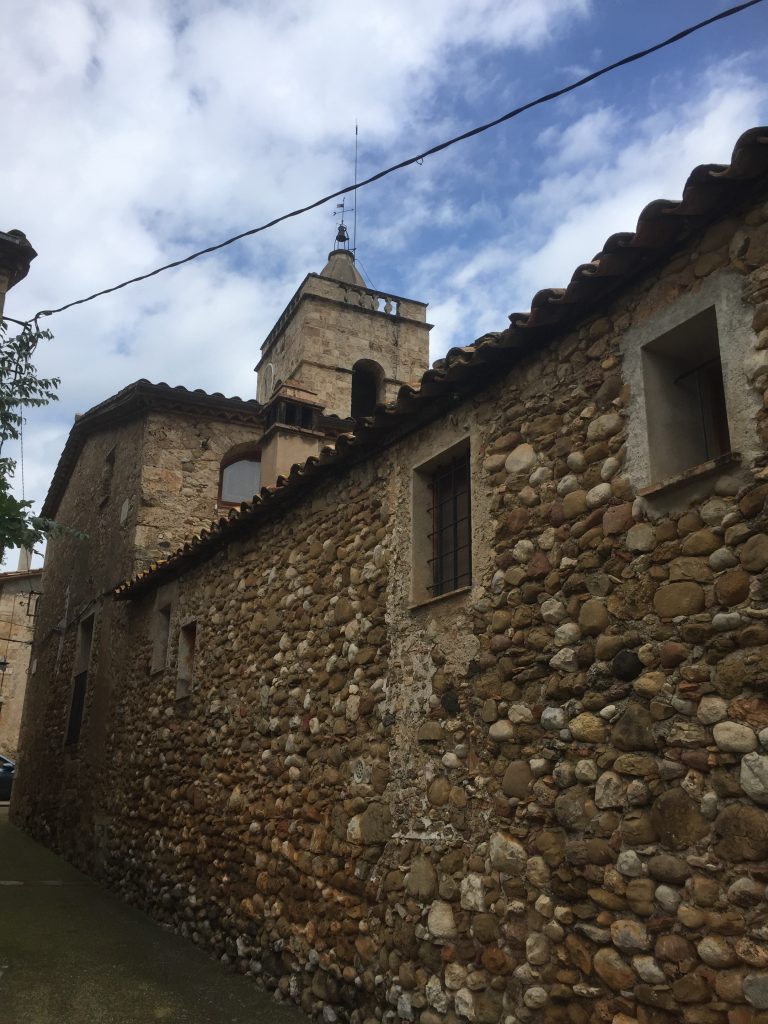
Medieval walls 
Esponellà square 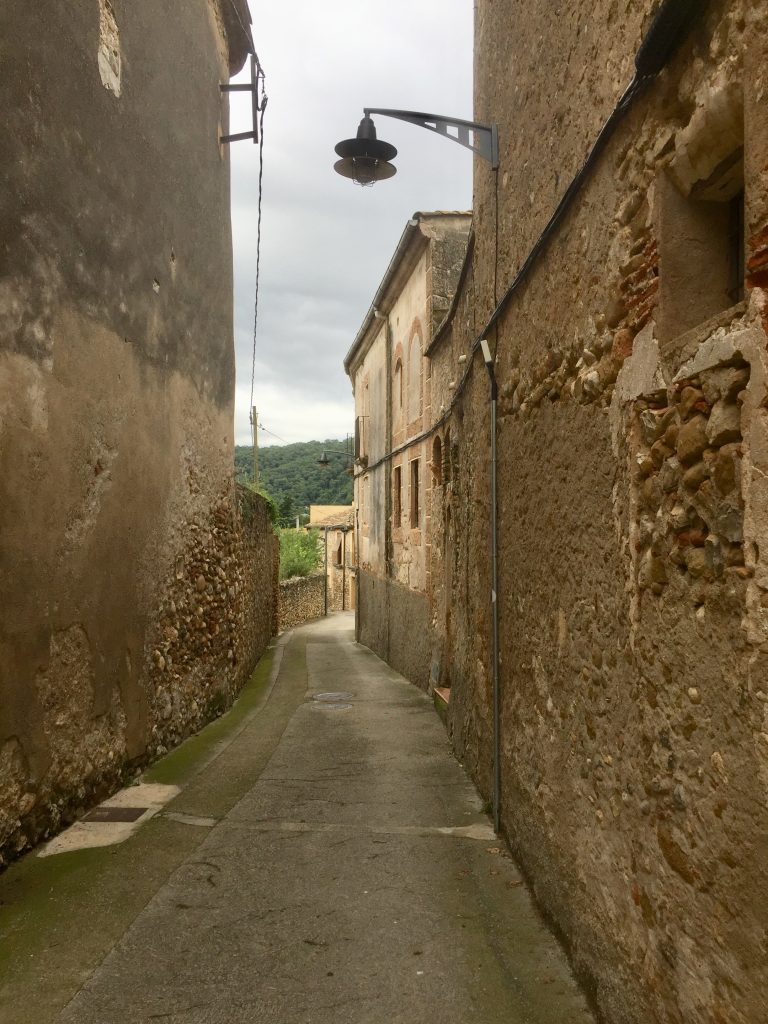
Narrow streets 
Secret garden 
Security chickens
We left Esponellà the following morning and slowly made our way back to Barcelona via Manresa. The first leg of our return trip took us through Parc Natural de la Zona Volcànica de la Garrotxa. Volcanic cones, lava flows, nature reserves, medieval castles, acres of farmland and the lovely Pyrennes filled our view for miles. Also, we crossed the river, El Fluvià, so many times, it became a joke. Every time we saw a bridge ahead, someone would shout “It’s El Fluvià” and we would all laugh ourselves silly.
About mid-way, we passed through Vic, a mysteriously backwards town that I have long wanted to visit. In the winter, Vic is almost continuously covered by fog. Due to the geography of the area, the little town sits smack in the middle of a thermal inversion. How cool is that? Puns aside, Vic is interesting because it is one of the few, rare regions in Spain where the climate is not wholly Mediterranean. Actually, I’m sure it’s interesting for many other reasons – probably some Roman, some religious, and some cultural or economic – but for me, it’s the creepy, persistent fog that makes Vic fascinating. Regrettably, the fog is a winter treat only, so we didn’t spend any real time in Vic other than to pass through on our way to Manresa.

Welcome to Manresa 
Pont Vell 
La Seu 
Snake lamppost 
La Seu 
Medieval structures
We entered Manresa with very little idea where we were going and what we would do there. I had researched the small town but had not decided on any particular place as our destination. In fact, our plan was more shoot-from-the-hip than normal so we wandered a bit here and there before we finally discovered a parking spot suitable for the van. Serendipitously, the spot we found was just at the base of the famous Collegiate Basilica of Santa Maria, or La Seu, which is also the principle monument of Manresa.
The church sits on top of the tallest hill in the city and from the yard, you can easily see the famous Roman bridge, Pont Vell, with its peaked shape (one long arch in the center and several other arches in symmetry on either side), and the nearby medieval walls that once surrounded the city but now remain only in well-preserved sections. It was breath-taking – both the hike up the never-ending staircase to the church base and the well-earned view from the grounds overlooking the old city.

Lunch in Manresa 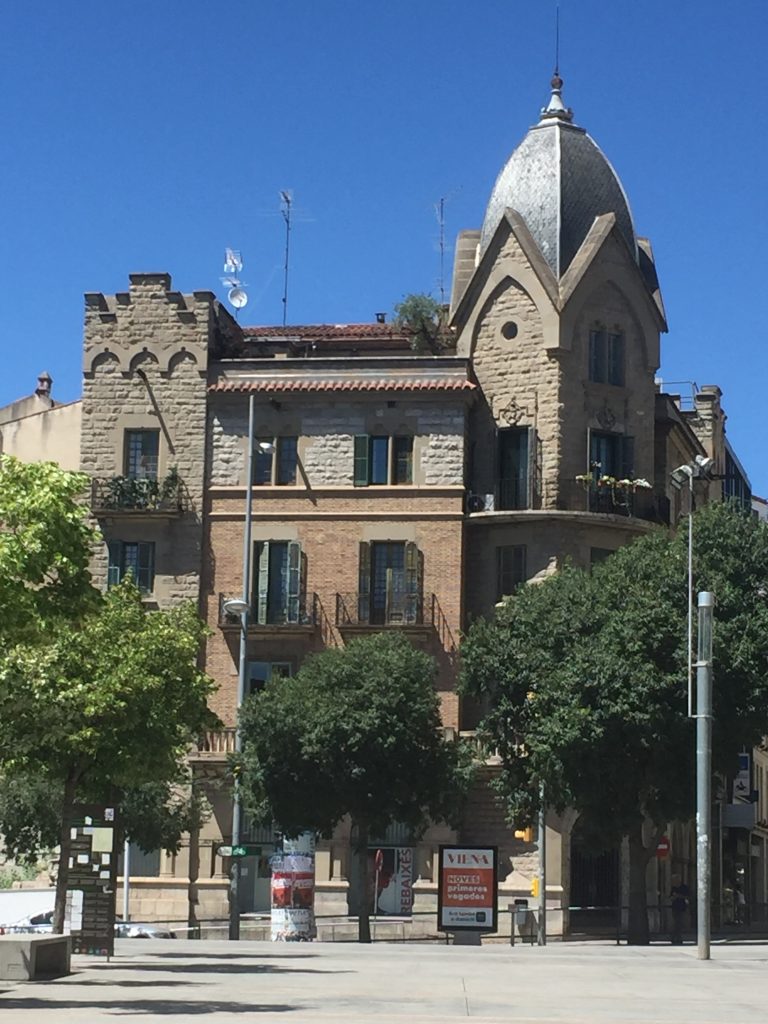
Lovely architecture 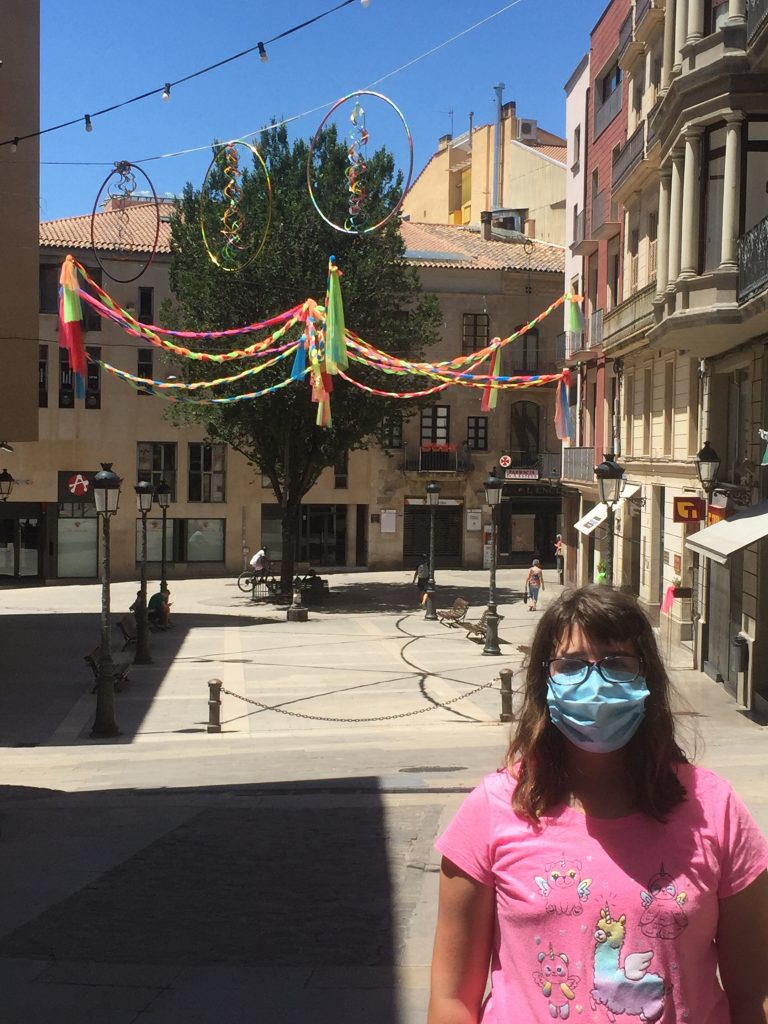
Decorations for the Fiesta
Next, we decided to embark on a walking tour of old town Manresa. The city was celebrating their Festa Major so the streets were decorated with banners, flags, bows, streamers and a variety of other traditional ornaments. In one small square, we discovered the perfect outdoor restaurant for a late lunch. Finally, and with very little aplomb, we departed Manresa, completed the return trip to Barcelona and brought an end to our first 2020 summer adventure. It wasn’t nearly as rough as I had feared and we all enjoyed a lovely week exploring the Spanish northeast.




